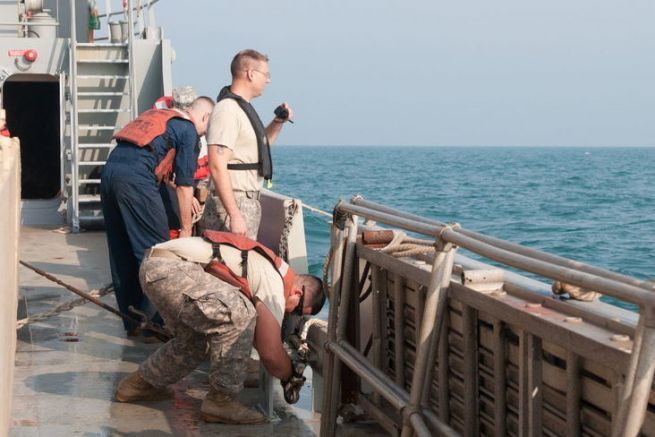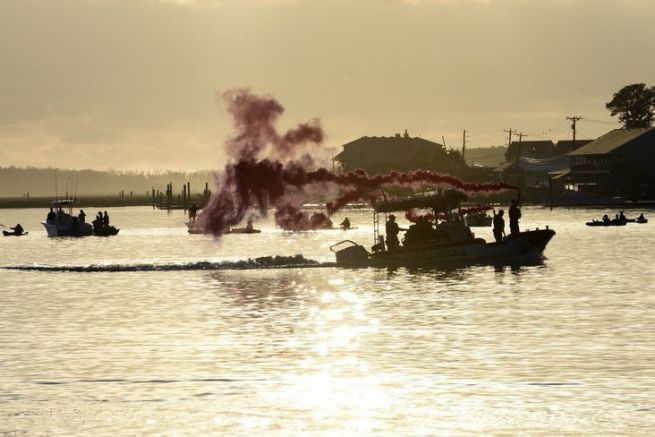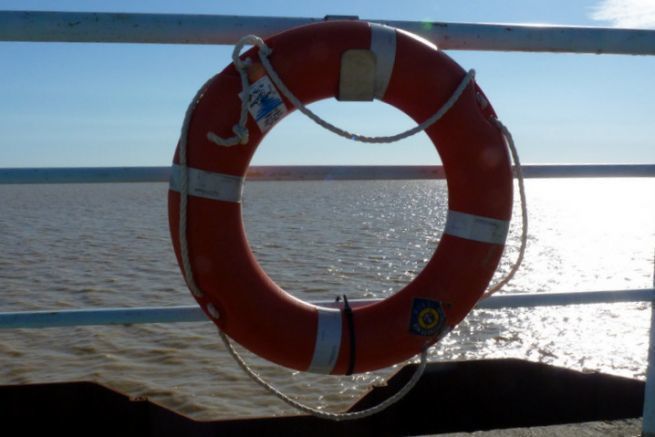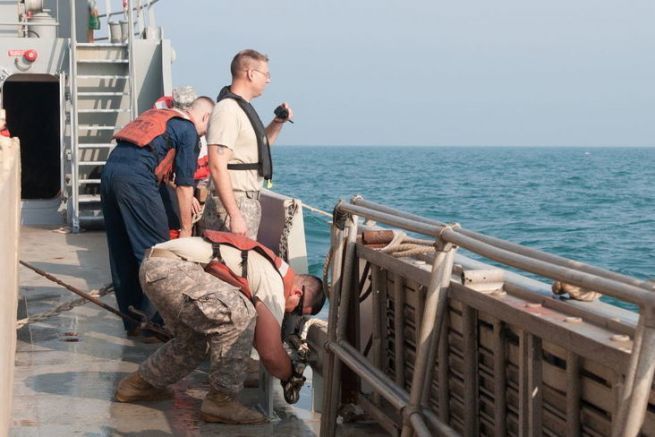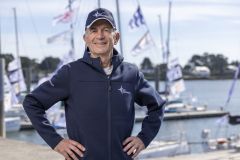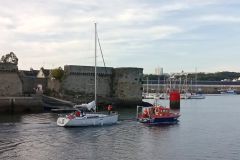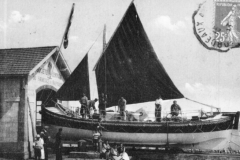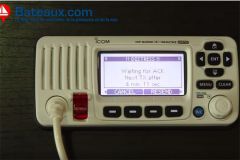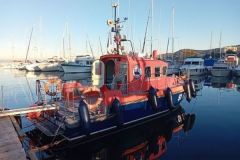After a fall overboard, it is important to start the search operations without delay. Indeed, the more time passes, the more the chances of locating the castaway are reduced and the search area, product of the natural drift of the person and the current, is important.
Because it can quickly reach considerable dimensions, the search area must be methodically and precisely surveyed, without haste.
First come, first served
Two cases exist. If the person who fell overboard is a member of your crew, it is clear that you must start the search without delay. You are in the heart of the search area and will be in the best position to carry out the search as soon as possible.
If you are outside the incident and have only heard the Mayday Relay or the alert from the CROSS, it is extremely exceptional that you are engaged by the authorities. If you are, of course, not only must you inform the operator of the operations center of your intention, but also - and above all - you must obey his instructions.
Whether or not the wanted person comes from your boat, the first one to arrive on the zone must not only declare himself to the authorities as being there, but also become the referent for further search operations. He will often hand over to more competent authorities ( Navy, SNSM, RNLI .. ) and must, at that time, transmit clear and precise elements of the way in which it has searched the area on the one hand, and of what it has or has not seen on the other hand. In other words, you will be hired by the CROSS operators and will become a tool at their service in this search phase.
Better to have a bad grid than no grid
While empirical advice is available on the theory of gridding an area, it should be kept in mind that it will generally be better to grid poorly - the meaning of the application of these great principles - than to remain without doing anything when arriving on the area, waiting for these instructions.
At worst, go to the spot where the castaway was last seen and make concentric circles - sometimes changing direction to spare the crew from seasickness - keeping that spot as the center of the circles. This method is not academic, but it is active and extremely effective.
The LKP as a starting point for the research
This is one of the main difficulties in starting operations. Knowing the last position of the shipwrecked person, because that is where everything comes from. And it is from this that you can optimize your search operations.
This point, which is called LKP (for L ast K nown P osition ) represents the fundamental component of the so-called datum or " update "The datum is the result of a calculation formula that will integrate the drift current, the wind drift ( remember your offshore license course ) at the LPK. It indicates the most probable position of a person according to its drift and its time of fall into the sea.
The CROSS are able to calculate it and to add probabilities, based on heavier mathematical models such as MOTHY .
Don't worry, engaged in such a search action, the instructions given by the authorities will be particularly clear and precise. Moreover, they are not improvised. Indeed, the way in which these elements are communicated is standardized by the international code of signals.
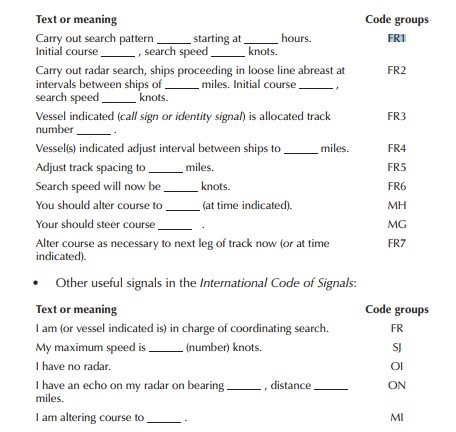
Square off according to a proven method
There are several methods of gridding but, as a yachtsman engaged in a search operation, it is almost certain that the CROSS will ask you to carry out the simplest one, the one known as concentric squares ( E xpanding S quare S earch in English, SS according to the standardisation ).
You position yourself at the datum and drop a floating and identified element of your boat on the water. A horseshoe buoy, for example, will do. The objective is to verify that you are holding the center in position and to follow the drift due to the current without having to think about it.
Once this object is dropped, you start the maneuvers, according to the diagram below.
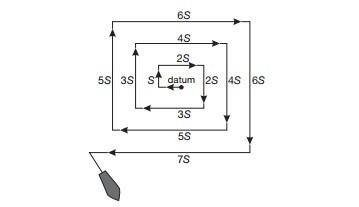
The first movement from this point to date will be in going upwind then, once you have crossed the distance S ( the CROSS will indicate it to you because it is also calculated ), you turn to starboard of 90° and cross the distance S again. On the third pass, you cover the distance S twice, 3 times on the fifth pass..
This maneuver will be carried out in this way until the seventh passage, when, according to the instructions If you are not sure where to start, you can leave the search or start the circuit again, centering on the new position of the buoy you dropped.
The new position of this buoy being due to the drift, it may be wise to transmit it to the operators with whom you will, of course, remain in contact throughout this search phase.
If your wanderings and the state of the water allow it, it is profitable to cut the engine regularly and to be completely silent to listen to possible cries or calls for help.
When the castaway is spotted
When you see the person you are looking for, it may be tempting to run out and rescue them. In reality, this could create an over-accident, which could be detrimental to the rescue and the operation itself. You must make sure that the person understands that you have located him/her and, at the same time, inform the CROSS operator of what you have seen.
Do not break eye contact with the survivor and reach out to him/her. Have his position in relation to you evaluated with a bearing compass and communicate this information to the authorities (" I just saw a person in my XX° at about YY nm" ).
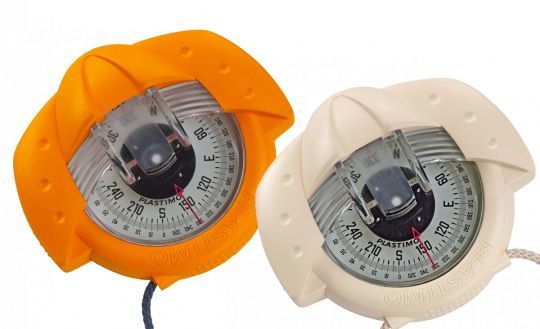
Beware of false impressions, shadows or hallucinations that may occur. Have another team member verify with binoculars that what you saw is the person you are looking for.
Leave the device on command only
Only if you have clearly obtained freedom of action ( clearance in English ) that you are allowed to leave the device. If you need to refuel ( fuel, water .. ) you should only do so once you have completed a full pass ( 7 S ) and notifying the operator you are in contact with.
Stay safe and secure throughout the search
Of course, this commitment must only be made in absolute safety for your boat, you and your crew who, at all times during operations, must wear the life jacket and all protective equipment.
Finally, the RIPAM the orders given by the CROSS operators do not mean that you should take any risk in your navigation.
